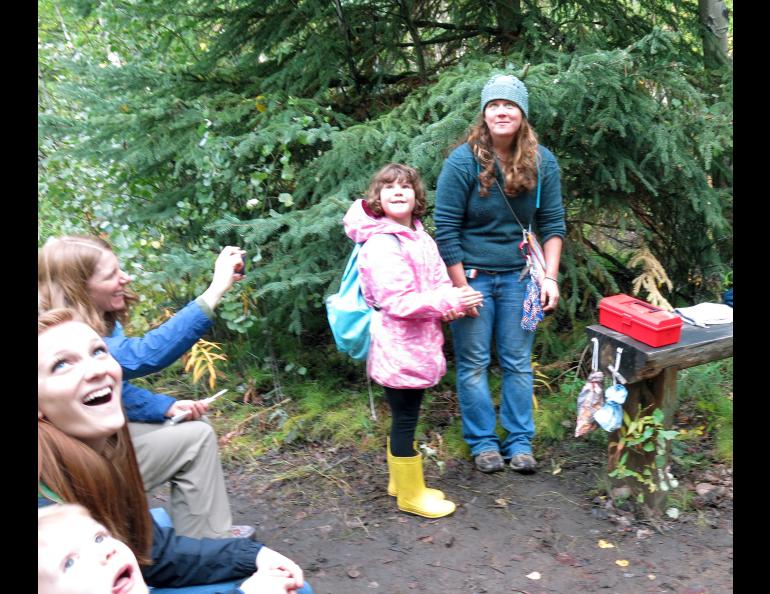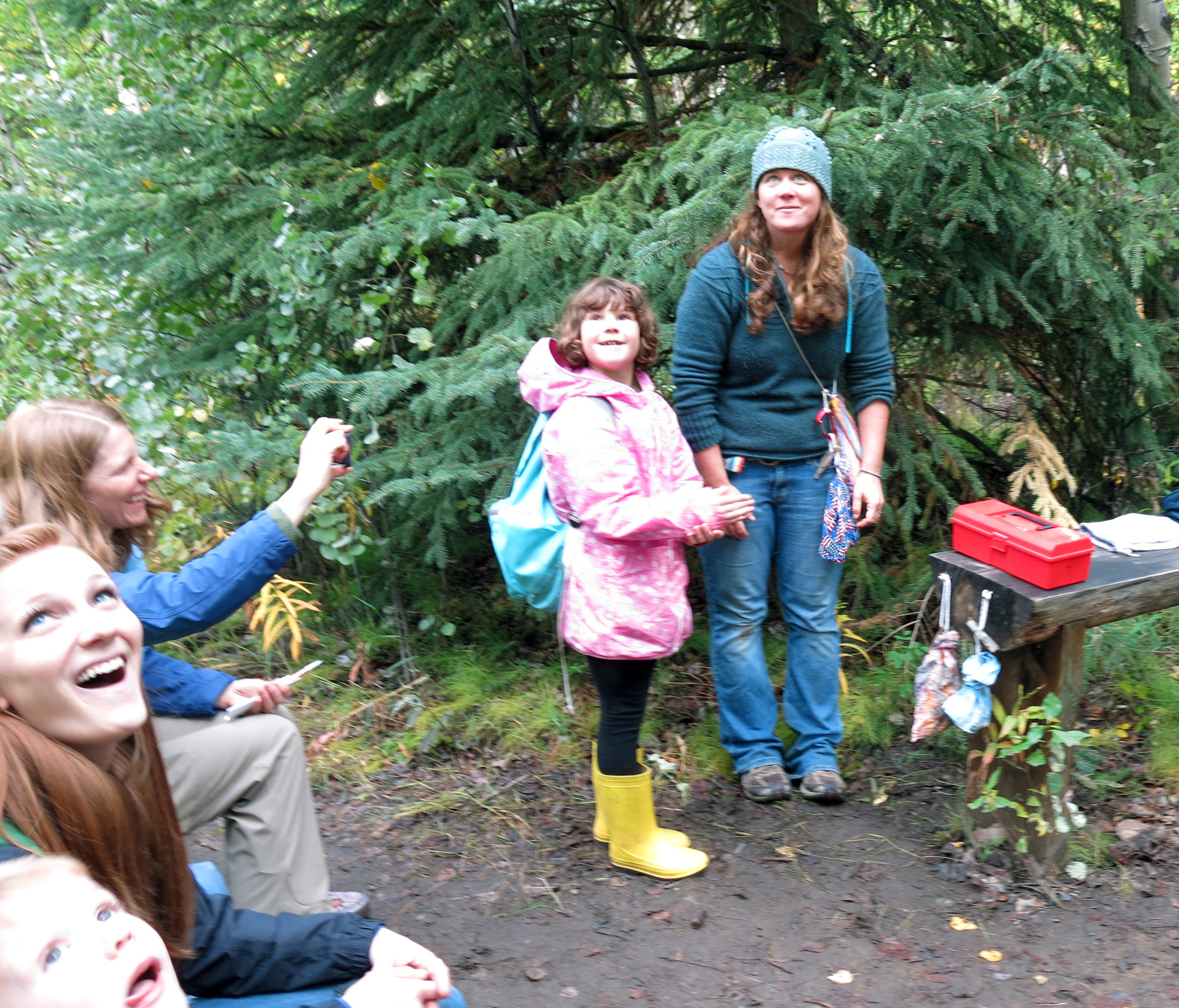
Billions of bodies on the move
CREAMER’S FIELD, FAIRBANKS — “As this bird takes off, think about how they have to fly thousands and thousands of miles,” Tricia Blake said to 21 first-graders sitting on wooden benches surrounded by birch and balsam poplar trees.
The biologist and educator then placed a ruby-crowned kinglet in the flat palm of a six-year old boy. The thumb-size songbird was probably born in northern Alaska this spring. During the past hour of its brief life (which will last about 4 years), it had a tiny metal band clamped around its ankle.
The greenish bird with a subtle red Mohawk hesitated for a few magic seconds on the boy’s hand. Then it burst into flight.
The boy and 20 of his classmates watched the bird flutter upward and land on the branch of a nearby birch tree. After a few seconds of preening, the kinglet shot off in the direction of Mexico.
Blake, who in January started the Alaska Songbird Institute with April Harding Scurr, told the children one of their motivations for starting the non-profit after the recent demise of the Alaska Bird Observatory — they wanted to preserve a long-term study.
Since Tom Pogson in 1992 started capturing songbirds in feathery black “mist nets” each spring and fall, researchers and volunteers have caught and placed bands upon songbirds like kinglets, blackpoll warblers, and gray-cheeked thrushes at Creamer’s Field. More than 100,000 birds have worn bands installed in this forest refuge not far from the city limits of Fairbanks.
“This is a project that has been going on for more than 20 years,” Blake said to the children. “And it will be going on for at least another 20 years.”
Before removing another bird from a cotton pouch and calling forward another lucky kid, Blake asked the children why they thought volunteers in a nearby rain shelter were placing bands on the legs of the birds.
“So you can tell if you caught them before?” asked a girl.
“That’s right,” Blake said. “And we have questions about what birds are here and how many there are.”
The metal bands, each stamped with a number, also allow people outside Alaska to report if they capture the birds in a Lower 48 mist net or if they find them dead. That hasn’t happened often — only one out of perhaps 5,000 birds banded at Creamer’s each year gets reported — but it’s valuable information.
Along with leg-tag numbers, biologists here send information including the bird’s species, sex, age and weight to the U.S. Geological Survey’s Bird Banding Lab in Patuxent, Md. There, technicians enter information from Creamer’s Field, a few other banding stations in Alaska and others throughout North America.
Back at Creamer’s, volunteers were monitoring two dozen mist nets on the half-hour, sometimes finding the flapping, warm bodies of thrushes, warblers and flycatchers. Their capture is a tiny subset of the billions of birds making their way out of Alaska before freezeup comes, and with it the sudden disappearance of insects and other food items.
As the state becomes less populated by orders of magnitude due to the exodus of migratory birds, Blake will continue to give tours to school groups like this one. The tours end on the last day of September, when the mist nets come down, the ground is hard and most birds are far away.
As kids clunked away in rain boots, Blake thought of her favorite part of the bird-banding demonstration, when she places a captured bird on the hand of a child. There it sits for a second or two, recovering, before it flies away to the freedom only a songbird knows.
The smile on the face of the little person who felt the almost-weightless presence and soft scratch of wings might be, she said, an indicator of one of those memories that sticks for a lifetime.
“It’s a powerful moment,” Blake said.





